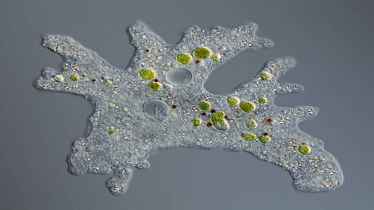A 15-year-old boy has died in Kerala’s Alappuzha district. On Friday, state health minister Veena George revealed that the death was caused due to a rare brain infection primary amoebic meningoencephalitis (PAM) caused by Naegleria fowleri, commonly known as ‘brain-eating amoeba’.
According to media reports, The first case of the infection was reported in the Thirumala ward of Alappuzha in 2016. George also revealed that five such cases of the rare infection had been reported in the state before.
“It’s a rare condition, and only one in ten thousand will contact it. The health department has taken adequate measures to sanitize the area from where the disease was reported. Before this, only five persons in the state suffered from the condition,” she said in an official communication as quoted by several media outlets.
According to a report by Indian Express, the boy died after suffering a week of high fever and rapid deterioration in his vitals. Moreover, he used to take a bath in a stream near his home which is most likely the source of the amoeba, as per Indian Express.
How does the brain-eating amoeba infect people?
According to Center for Disease Control and Prevention (CDC), Naegleria fowleri infects people when water containing the amoeba enters the body through the nose. This occurs when people go swimming, diving, or when they put their heads under fresh water, like in lakes and rivers.
After the amoeba enters the nose, ravels up the nose to the brain, where it destroys the brain tissue and causes a devastating infection called primary amebic meningoencephalitis (PAM). PAM is almost always fatal, warns CDC.
The CDC also highlights that the rare infection may also happen when people use contaminated tap water to cleanse their noses.
The ameba can be found in:
- Warm fresh water, such as lakes and rivers
- Geothermal (naturally hot) water, such as hot springs
- Warm water discharge from industrial or power plants
- Untreated geothermal (naturally hot) drinking water sources
- Swimming pools, splash pads, surf parks, or other recreational venues that are poorly maintained or don’t have enough chlorine in them
- Tap water
- Water heaters
- Soil, including sediment at the bottom of lakes, ponds, and rivers
Naegleria fowleri is not found in salt water, like the ocean.
What are the symptoms of infection caused by brain-eating amoeba?
According to CDC, PAM is difficult to detect as the disease progresses rapidly. Sometimes, the diagnosis occurs after the patient dies. Some of the symptoms include:
- Severe frontal headache
- Fever
- Nausea
- Vomiting
- Stiff neck
- Seizures
- Altered mental status
- Hallucinations
- Coma
How to this infection treated?
According to CDC, this rare infection is treated with a combination of drugs, often including amphotericin B, azithromycin, fluconazole, rifampin, miltefosine, and dexamethasone. However, most reported infections have been fatal.
Experts often recommend avoiding swimming or diving in warm freshwater bodies. You should use nose clips or keep your head above water.
